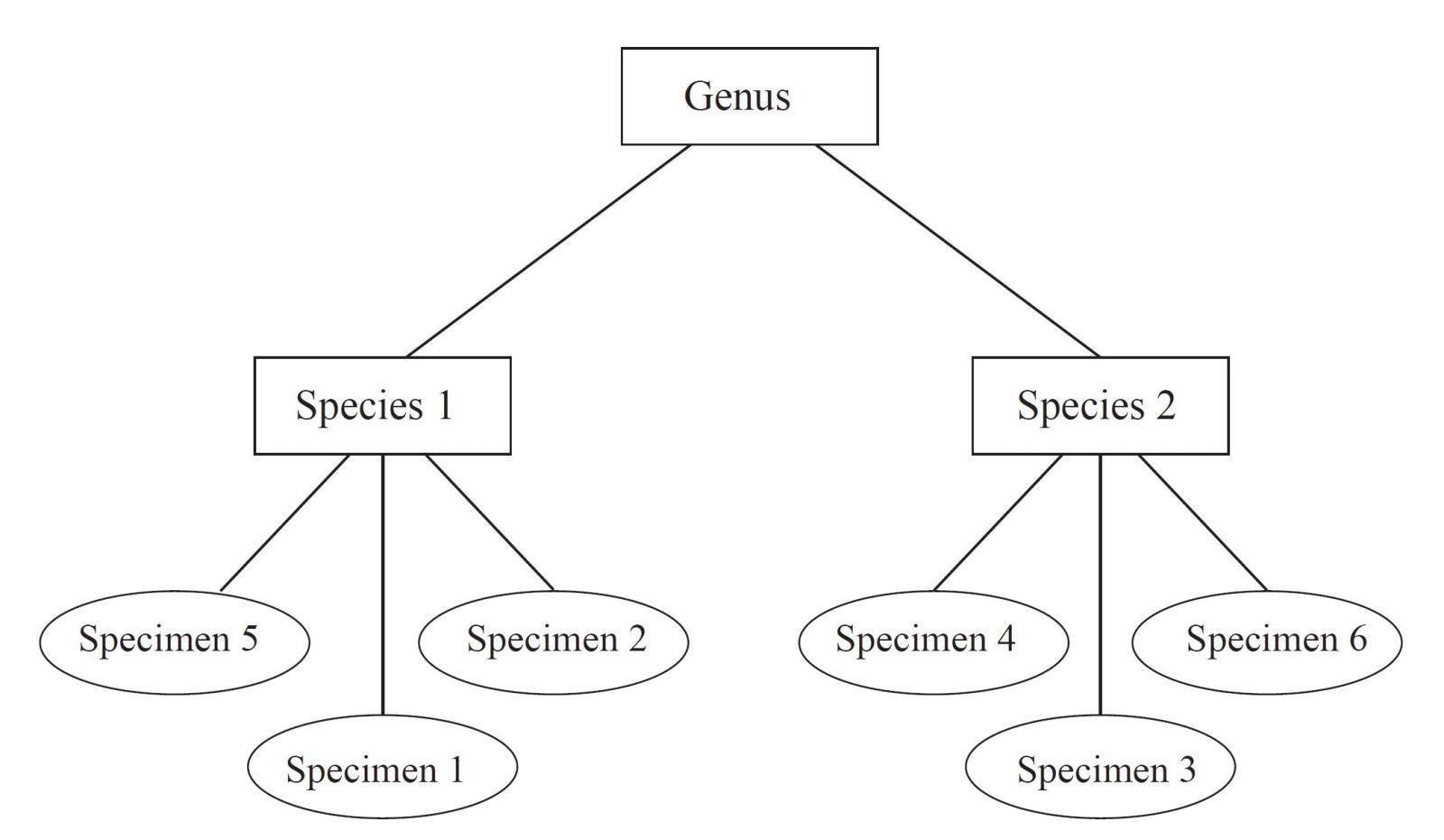A large zoo has a collection of many individual animals of many different species. A computer program is being developed to keep track of all of the animals in the collection.
Because there are so many different kinds of species in the collection, and each species has some unique characteristics and some characteristics in common with other species, it was decided that the computer program would contain objects that correspond to different levels of the taxonomy used by biologists to classify all life forms. A genus is composed of a group of species that have similar common characteristics, as shown in the diagram.

A separate object, Specimen, is used to represent each individual animal in the zoo.
The following code implements the Species and Specimen objects:
public class Species extends Genus
{
private String speciesName;
public Species( String s, String g )
{
super(g);
setSpeciesName(s);
}
public void setSpeciesName(String s){ speciesName = s; }
public String getSpeciesName(){ return speciesName; }
public String toString()
{
return "Species: " + getGenusName() + " " + speciesName;
}
public boolean equals(Species s)
{
return speciesName.equals(s.getSpeciesName());
}
}
public class Specimen
{
private String name;
private int cageNumber;
private Species toa; // "Type Of Animal"
public Specimen( String a, int c, Species s)
{
setName(a);
setCage(c);
setTOA(s);
}
public void setName(String a){ name = a; }
public void setCage(int c){ cageNumber = c; }
public void setTOA(Species s){ toa = s; }
public String getName(){ return name; }
public int getCage(){ return cageNumber; }
public Species getTOA(){ return toa; }
public String toString()
{
return name + " is a " + toa + " in cage " + cageNumber;
}
}
(a) State the relationship between the Genus and Species objects. [1]
(b) State the relationship between the Species and Specimen objects. [1]